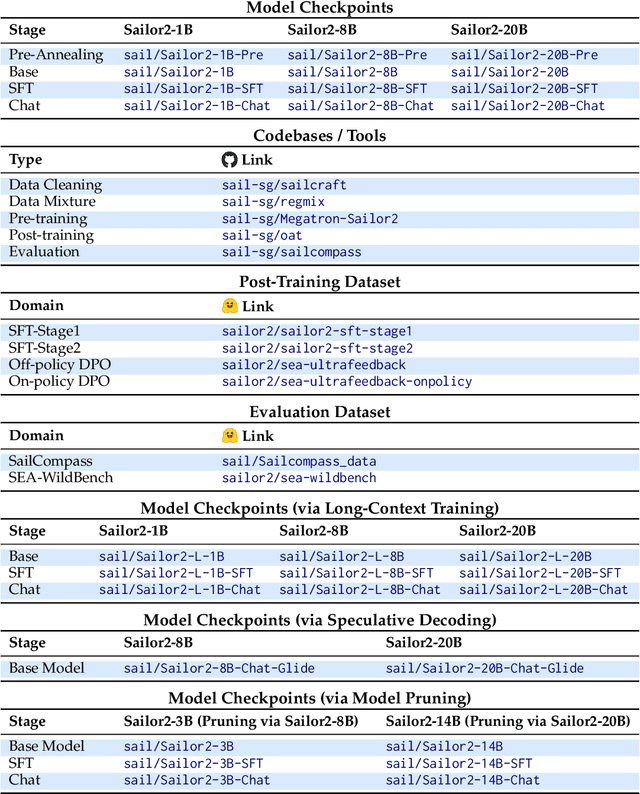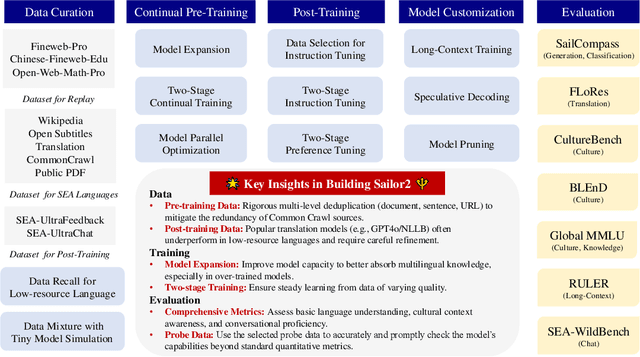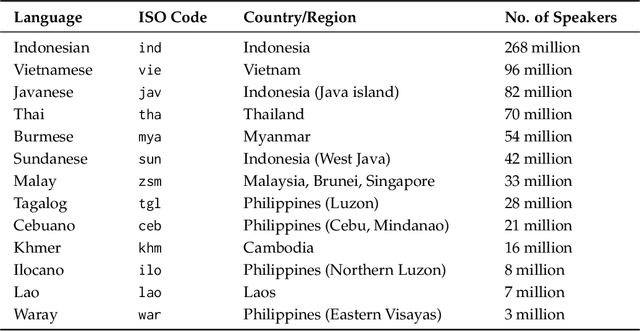Zeyi Liu
Awesome-OL: An Extensible Toolkit for Online Learning
Jul 27, 2025Abstract:In recent years, online learning has attracted increasing attention due to its adaptive capability to process streaming and non-stationary data. To facilitate algorithm development and practical deployment in this area, we introduce Awesome-OL, an extensible Python toolkit tailored for online learning research. Awesome-OL integrates state-of-the-art algorithm, which provides a unified framework for reproducible comparisons, curated benchmark datasets, and multi-modal visualization. Built upon the scikit-multiflow open-source infrastructure, Awesome-OL emphasizes user-friendly interactions without compromising research flexibility or extensibility. The source code is publicly available at: https://github.com/liuzy0708/Awesome-OL.
Geometry-aware 4D Video Generation for Robot Manipulation
Jul 01, 2025Abstract:Understanding and predicting the dynamics of the physical world can enhance a robot's ability to plan and interact effectively in complex environments. While recent video generation models have shown strong potential in modeling dynamic scenes, generating videos that are both temporally coherent and geometrically consistent across camera views remains a significant challenge. To address this, we propose a 4D video generation model that enforces multi-view 3D consistency of videos by supervising the model with cross-view pointmap alignment during training. This geometric supervision enables the model to learn a shared 3D representation of the scene, allowing it to predict future video sequences from novel viewpoints based solely on the given RGB-D observations, without requiring camera poses as inputs. Compared to existing baselines, our method produces more visually stable and spatially aligned predictions across multiple simulated and real-world robotic datasets. We further show that the predicted 4D videos can be used to recover robot end-effector trajectories using an off-the-shelf 6DoF pose tracker, supporting robust robot manipulation and generalization to novel camera viewpoints.
Lite-RVFL: A Lightweight Random Vector Functional-Link Neural Network for Learning Under Concept Drift
Jun 09, 2025Abstract:The change in data distribution over time, also known as concept drift, poses a significant challenge to the reliability of online learning methods. Existing methods typically require model retraining or drift detection, both of which demand high computational costs and are often unsuitable for real-time applications. To address these limitations, a lightweight, fast and efficient random vector functional-link network termed Lite-RVFL is proposed, capable of adapting to concept drift without drift detection and retraining. Lite-RVFL introduces a novel objective function that assigns weights exponentially increasing to new samples, thereby emphasizing recent data and enabling timely adaptation. Theoretical analysis confirms the feasibility of this objective function for drift adaptation, and an efficient incremental update rule is derived. Experimental results on a real-world safety assessment task validate the efficiency, effectiveness in adapting to drift, and potential to capture temporal patterns of Lite-RVFL. The source code is available at https://github.com/songqiaohu/Lite-RVFL.
CoIn-SafeLink: Safety-critical Control With Cost-sensitive Incremental Random Vector Functional Link Network
Mar 19, 2025Abstract:Control barrier functions (CBFs) play a crucial role in achieving the safety-critical control of robotic systems theoretically. However, most existing methods rely on the analytical expressions of unsafe state regions, which is often impractical for irregular and dynamic unsafe regions. In this paper, a novel CBF construction approach, called CoIn-SafeLink, is proposed based on cost-sensitive incremental random vector functional-link (RVFL) neural networks. By designing an appropriate cost function, CoIn-SafeLink achieves differentiated sensitivities to safe and unsafe samples, effectively achieving zero false-negative risk in unsafe sample classification. Additionally, an incremental update theorem for CoIn-SafeLink is proposed, enabling precise adjustments in response to changes in the unsafe region. Finally, the gradient analytical expression of the CoIn-SafeLink is provided to calculate the control input. The proposed method is validated on a 3-degree-of-freedom drone attitude control system. Experimental results demonstrate that the method can effectively learn the unsafe region boundaries and rapidly adapt as these regions evolve, with an update speed approximately five times faster than comparison methods. The source code is available at https://github.com/songqiaohu/CoIn-SafeLink.
Performance-bounded Online Ensemble Learning Method Based on Multi-armed bandits and Its Applications in Real-time Safety Assessment
Mar 19, 2025Abstract:Ensemble learning plays a crucial role in practical applications of online learning due to its enhanced classification performance and adaptable adjustment mechanisms. However, most weight allocation strategies in ensemble learning are heuristic, making it challenging to theoretically guarantee that the ensemble classifier outperforms its base classifiers. To address this issue, a performance-bounded online ensemble learning method based on multi-armed bandits, named PB-OEL, is proposed in this paper. Specifically, multi-armed bandit with expert advice is incorporated into online ensemble learning, aiming to update the weights of base classifiers and make predictions. A theoretical framework is established to bound the performance of the ensemble classifier relative to base classifiers. By setting expert advice of bandits, the bound exceeds the performance of any base classifier when the length of data stream is sufficiently large. Additionally, performance bounds for scenarios with limited annotations are also derived. Numerous experiments on benchmark datasets and a dataset of real-time safety assessment tasks are conducted. The experimental results validate the theoretical bound to a certain extent and demonstrate that the proposed method outperforms existing state-of-the-art methods.
Sailor2: Sailing in South-East Asia with Inclusive Multilingual LLMs
Feb 18, 2025



Abstract:Sailor2 is a family of cutting-edge multilingual language models for South-East Asian (SEA) languages, available in 1B, 8B, and 20B sizes to suit diverse applications. Building on Qwen2.5, Sailor2 undergoes continuous pre-training on 500B tokens (400B SEA-specific and 100B replay tokens) to support 13 SEA languages while retaining proficiency in Chinese and English. Sailor2-20B model achieves a 50-50 win rate against GPT-4o across SEA languages. We also deliver a comprehensive cookbook on how to develop the multilingual model in an efficient manner, including five key aspects: data curation, pre-training, post-training, model customization and evaluation. We hope that Sailor2 model (Apache 2.0 license) will drive language development in the SEA region, and Sailor2 cookbook will inspire researchers to build more inclusive LLMs for other under-served languages.
Adaptive Compliance Policy: Learning Approximate Compliance for Diffusion Guided Control
Oct 12, 2024



Abstract:Compliance plays a crucial role in manipulation, as it balances between the concurrent control of position and force under uncertainties. Yet compliance is often overlooked by today's visuomotor policies that solely focus on position control. This paper introduces Adaptive Compliance Policy (ACP), a novel framework that learns to dynamically adjust system compliance both spatially and temporally for given manipulation tasks from human demonstrations, improving upon previous approaches that rely on pre-selected compliance parameters or assume uniform constant stiffness. However, computing full compliance parameters from human demonstrations is an ill-defined problem. Instead, we estimate an approximate compliance profile with two useful properties: avoiding large contact forces and encouraging accurate tracking. Our approach enables robots to handle complex contact-rich manipulation tasks and achieves over 50\% performance improvement compared to state-of-the-art visuomotor policy methods. For result videos, see https://adaptive-compliance.github.io/
ManiWAV: Learning Robot Manipulation from In-the-Wild Audio-Visual Data
Jun 27, 2024



Abstract:Audio signals provide rich information for the robot interaction and object properties through contact. These information can surprisingly ease the learning of contact-rich robot manipulation skills, especially when the visual information alone is ambiguous or incomplete. However, the usage of audio data in robot manipulation has been constrained to teleoperated demonstrations collected by either attaching a microphone to the robot or object, which significantly limits its usage in robot learning pipelines. In this work, we introduce ManiWAV: an 'ear-in-hand' data collection device to collect in-the-wild human demonstrations with synchronous audio and visual feedback, and a corresponding policy interface to learn robot manipulation policy directly from the demonstrations. We demonstrate the capabilities of our system through four contact-rich manipulation tasks that require either passively sensing the contact events and modes, or actively sensing the object surface materials and states. In addition, we show that our system can generalize to unseen in-the-wild environments, by learning from diverse in-the-wild human demonstrations. Project website: https://mani-wav.github.io/
ContactHandover: Contact-Guided Robot-to-Human Object Handover
Apr 01, 2024Abstract:Robot-to-human object handover is an important step in many human robot collaboration tasks. A successful handover requires the robot to maintain a stable grasp on the object while making sure the human receives the object in a natural and easy-to-use manner. We propose ContactHandover, a robot to human handover system that consists of two phases: a contact-guided grasping phase and an object delivery phase. During the grasping phase, ContactHandover predicts both 6-DoF robot grasp poses and a 3D affordance map of human contact points on the object. The robot grasp poses are reranked by penalizing those that block human contact points, and the robot executes the highest ranking grasp. During the delivery phase, the robot end effector pose is computed by maximizing human contact points close to the human while minimizing the human arm joint torques and displacements. We evaluate our system on 27 diverse household objects and show that our system achieves better visibility and reachability of human contacts to the receiver compared to several baselines. More results can be found on https://clairezixiwang.github.io/ContactHandover.github.io
REFLECT: Summarizing Robot Experiences for Failure Explanation and Correction
Jul 12, 2023



Abstract:The ability to detect and analyze failed executions automatically is crucial for an explainable and robust robotic system. Recently, Large Language Models (LLMs) have demonstrated strong reasoning abilities on textual inputs. To leverage the power of LLM for robot failure explanation, we introduce a framework REFLECT, which queries LLM to identify and explain robot failures given a hierarchical summary of robot past experiences generated from multi-sensory data. Conditioned on the explanation, a task planner will generate an executable plan for the robot to correct the failure and complete the task. To systematically evaluate the framework, we create the RoboFail dataset with a variety of tasks and failure scenarios. We demonstrate that the LLM-based framework is able to generate informative failure explanations that assist successful correction planning. Videos and code available at: https://roboreflect.github.io/.
 Add to Chrome
Add to Chrome Add to Firefox
Add to Firefox Add to Edge
Add to Edge